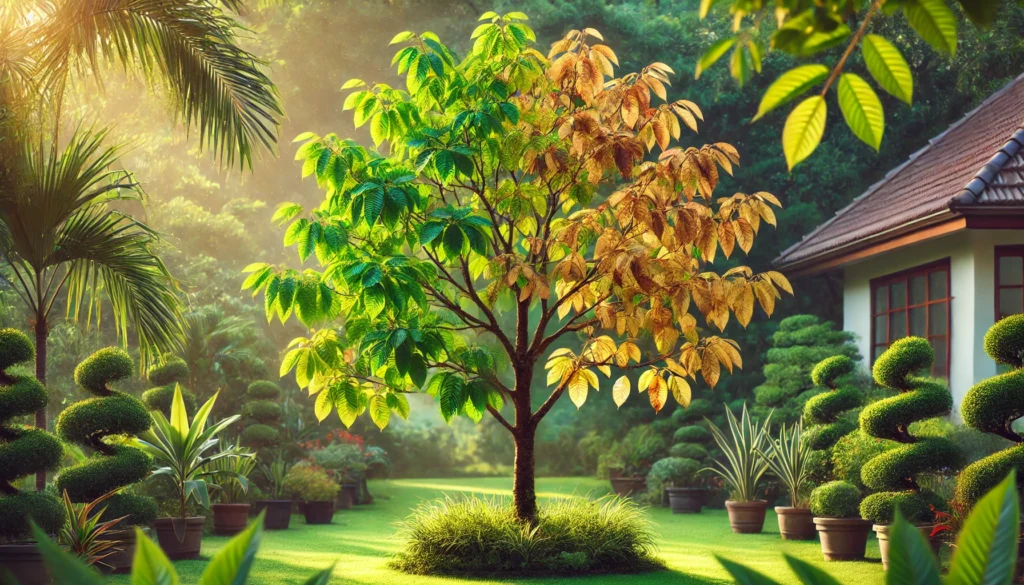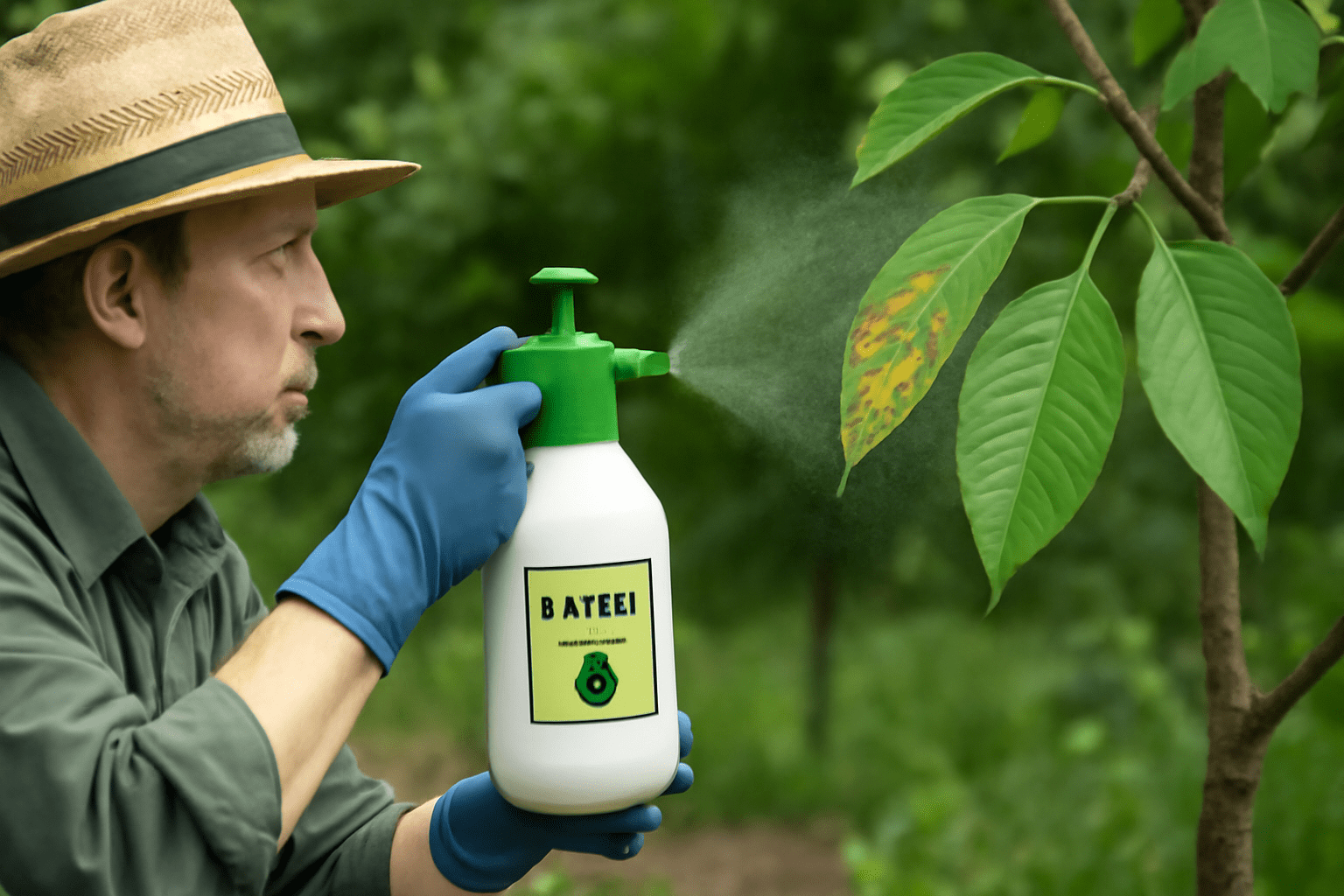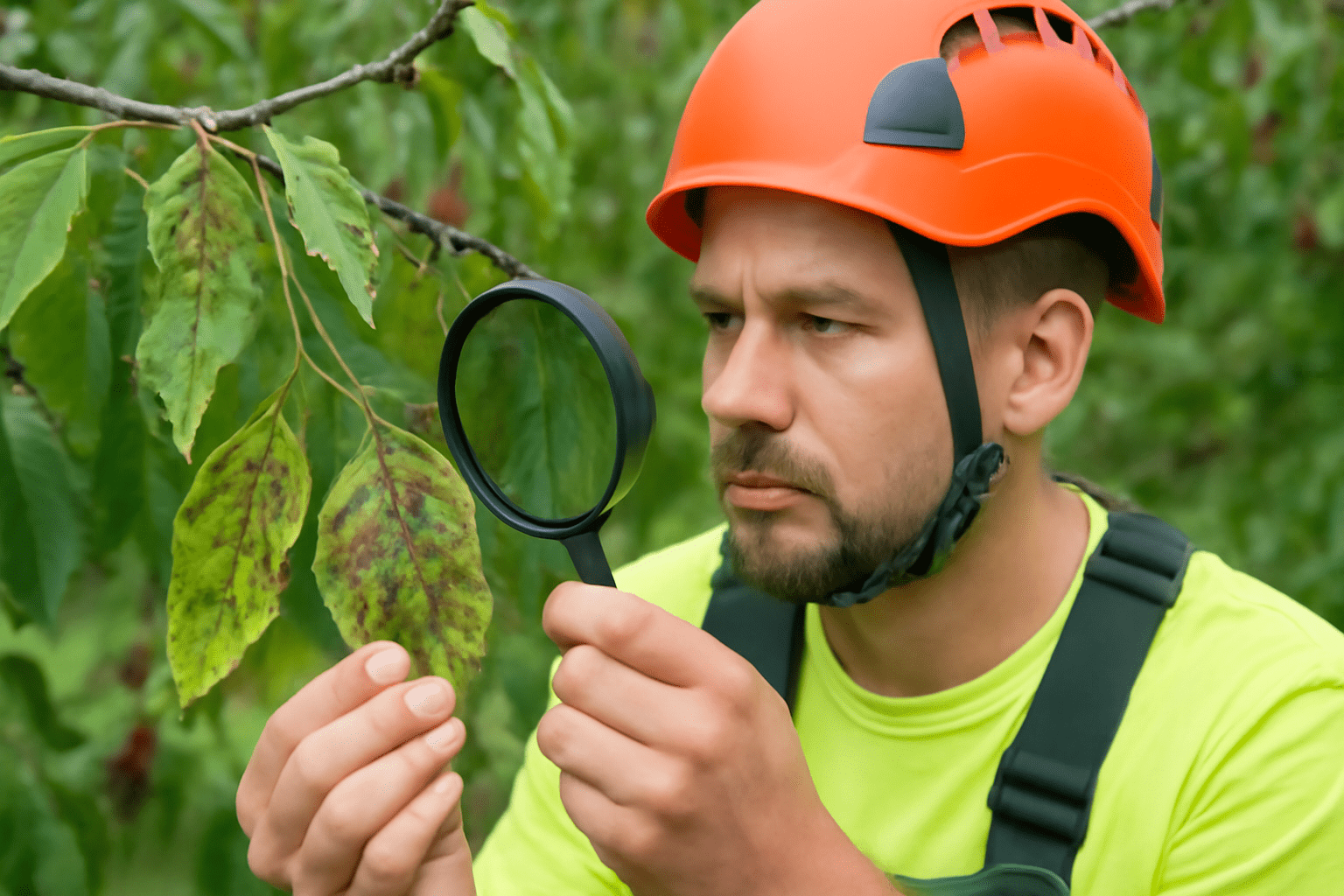
Common Cherry Tree Leaf Diseases and How to Fix Them: A Complete Guide
Cherry trees are a beautiful addition to any garden, but like all plants, they can fall victim to diseases, especially when their leaves start to show signs of trouble. If you’ve noticed discolored or damaged leaves on your cherry tree, you’re not alone. Common Cherry Tree Leaf Diseases and How to Fix Them is an issue many gardeners face, and understanding how to identify and treat these diseases is crucial for keeping your tree healthy. In this guide, we’ll walk you through the most common cherry tree leaf diseases, their symptoms, and natural solutions to restore your tree’s vitality.
Table of Contents
ToggleUnderstanding Cherry Tree Leaf Diseases 
Cherry trees are beautiful additions to any garden, but they can be susceptible to a variety of leaf diseases. Identifying these issues early is key to maintaining a healthy tree 

1. Cherry Leaf Spot (Blumeriella jaapii) 
One of the most common cherry tree diseases, cherry leaf spot causes small, dark spots on the leaves with a yellow halo. As the infection progresses, the leaves will turn brown and eventually drop. It thrives in wet conditions, so proper drainage and good air circulation around your tree are essential.
2. Powdery Mildew 
Powdery mildew appears as a white, powdery coating on the tops of cherry tree leaves. This fungus thrives in warm, dry conditions and can stunt growth if left untreated. Regularly removing infected leaves and improving sunlight exposure can help prevent this issue.
3. Cytospora Canker 
Cytospora canker affects older cherry trees, causing dark, sunken lesions on branches and leaves. As the disease progresses, it can lead to dieback. Pruning infected branches and keeping the tree healthy with proper watering and fertilization can help prevent this disease.
4. Leaf Curl 
Cherry tree leaf curl causes leaves to curl, turn red, and distort. It’s often caused by a fungal infection, especially during wet spring seasons. Applying a fungicide early in the season and removing infected leaves can keep this condition under control.
Prevention Tips:
- Prune your tree regularly to improve airflow.
- Remove fallen leaves to reduce fungal spread.
- Apply fungicides if necessary, following the manufacturer’s instructions.
By staying vigilant and taking these simple steps, you can keep your cherry tree healthy and thriving 
Most Common Cherry Tree Leaf Diseases 
Cherry trees, like all plants, are susceptible to various leaf diseases. Recognizing these diseases early can help you manage and prevent damage to your tree. Here are the most common cherry tree leaf diseases to watch out for:

1. Cherry Leaf Spot 
Cherry leaf spot is caused by a fungus that creates small, round, purple or red spots on the leaves. Over time, these spots turn yellow, and the affected leaves fall off. This weakens the tree and reduces its ability to photosynthesize, affecting fruit production.
Solution: Remove fallen leaves, and treat the tree with a fungicide in early spring to prevent further outbreaks.
2. Powdery Mildew 
Powdery mildew appears as a white, powdery coating on the upper surfaces of cherry tree leaves. This disease thrives in warm, dry conditions and can stunt the tree’s growth and fruit development.
Solution: Prune infected branches, ensure proper air circulation, and apply fungicides to control the spread.
3. Bacterial Canker 
Bacterial canker causes dark, sunken lesions on branches and leaves. The disease often appears as dark streaks on the leaf veins and can lead to premature leaf drop.
Solution: Prune affected areas and sterilize your tools between cuts. Avoid overhead watering, as moisture encourages the spread of the bacteria.
4. Anthracnose 
This fungal disease causes dark, sunken spots and dead patches on cherry tree leaves. It can spread quickly in rainy weather, leading to significant leaf drop and overall tree stress.
Solution: Remove infected leaves and branches and apply fungicides during the early spring and fall.
5. Rust 
Rust is a fungal infection that forms orange or yellow spots on cherry tree leaves, eventually causing them to curl and fall prematurely. It is most common in wet conditions.
Solution: Remove infected leaves and, if necessary, use fungicides to manage the spread of rust.
By identifying these common diseases early and treating them promptly, you can help ensure your cherry tree stays healthy and productive. Regular inspection and proper care are key to preventing damage!
Preventing Cherry Tree Leaf Diseases Before They Start 
Preventing diseases on your cherry tree starts with proactive care! Here’s how to ensure your tree stays healthy and thriving:
1. Choose Resistant Varieties 
Select cherry tree varieties that are naturally resistant to common diseases like leaf spot or powdery mildew. These varieties can help reduce the risk of issues from the start.
2. Prune Regularly 
Pruning helps improve air circulation, reducing moisture buildup on leaves, which can lead to fungal infections. Remove dead or diseased branches promptly to keep your tree healthy.

3. Water Properly 
Avoid over-watering your cherry tree. Too much water can cause root rot and encourage fungal growth. Water the base of the tree, keeping the leaves dry to prevent diseases like leaf blight.
4. Mulch with Care 
Apply a layer of mulch around the base to retain moisture and prevent weed growth. However, make sure the mulch isn’t piled up against the tree trunk, as this can cause bark rot.
5. Inspect Regularly 
Check your tree for signs of disease, like spots or discolored leaves. Early detection allows you to take quick action to prevent the spread of any potential issues.
6. Use Fungicide as a Preventative 
If you’re in a region prone to fungal diseases, applying a preventive fungicide can help keep your cherry tree’s leaves healthy. Opt for organic or eco-friendly options to protect the environment.
7. Ensure Good Drainage 
Make sure your cherry tree is planted in well-drained soil. Poor drainage can lead to waterlogged roots and increase the chances of diseases like root rot.
By following these steps, you can prevent many common cherry tree leaf diseases, ensuring your tree remains vibrant and productive all season long!
How to Treat Cherry Tree Leaf Diseases Naturally 
Cherry trees are beautiful, but they can be susceptible to various leaf diseases. Fortunately, there are several natural methods to treat these issues, helping your tree stay healthy without the use of harmful chemicals. Here are some eco-friendly solutions you can try:
1. Neem Oil Spray 
Neem oil is a powerful, natural fungicide and pesticide that works wonders on cherry tree leaf diseases. Mix 2 tablespoons of neem oil with a gallon of water and spray it on the affected leaves. This helps prevent fungal infections like leaf spot and powdery mildew.

2. Baking Soda Solution 
A simple baking soda solution can help combat fungal infections. Mix 1 tablespoon of baking soda, 1 tablespoon of vegetable oil, and 1 gallon of water. Spray it on the tree to create an alkaline environment that discourages fungal growth.
3. Apple Cider Vinegar 
Apple cider vinegar is another natural remedy that works against fungus and bacteria. Mix 1 cup of apple cider vinegar with 1 gallon of water and spray it on the affected areas of the leaves. This helps reduce disease spread and boosts the tree’s overall health.
4. Pruning & Removing Affected Leaves 
Regular pruning is essential for cherry trees. Cut off any leaves showing signs of disease to prevent the spread. Always use clean, sharp tools and dispose of the infected leaves properly.
5. Encourage Good Air Circulation 
A well-ventilated tree is less likely to suffer from leaf diseases. Make sure your cherry tree is planted in a spot that gets plenty of sunlight and isn’t overcrowded by other plants. This will help air circulate around the tree and keep disease-causing moisture at bay.
6. Mulching with Organic Matter 
Mulch around the base of your cherry tree using organic matter like compost or wood chips. This helps retain moisture and reduces weed growth, which can contribute to the spread of diseases. Just make sure not to pile mulch directly against the tree trunk.
By following these natural remedies, you can keep your cherry tree healthy and vibrant without relying on chemical treatments.
When to Call in a Professional 
Knowing when to call a professional for help with your plants can save you time, money, and stress. Here are a few key signs:
- Severe Pest Infestation
: If you notice persistent or large-scale pest problems, it’s time to get an expert. A professional can identify the type of pest and apply the right treatments to protect your plants.
- Plant Disease
: If your plant shows signs of a serious disease that you can’t treat yourself, a professional can diagnose it properly and prevent it from spreading to other plants.

- Tree or Large Plant Care
: If you’re dealing with large trees or complicated plant structures, such as pruning or planting in hard-to-reach areas, a professional will have the right tools and knowledge to ensure everything is done safely.
- Soil Issues
: Poor soil conditions affecting growth? A plant expert can test and amend the soil to provide optimal nutrients and drainage.
- Unusual Plant Growth
: If a plant’s growth seems stunted, unusually fast, or irregular, a professional can diagnose root problems, watering issues, or nutrient imbalances.
When in doubt, don’t hesitate to call in a pro to ensure your plants stay healthy and vibrant!
Conclusion 
Taking care of your cherry tree involves more than just occasional watering; it requires vigilance and knowledge to identify and treat Common Cherry Tree Leaf Diseases and How to Fix Them before they cause significant harm. By understanding the symptoms of common diseases like cherry leaf spot, powdery mildew, and brown rot, you can take proactive steps to maintain your tree’s health and longevity. Whether you choose natural remedies or organic fungicides, prompt treatment and preventative measures will help your cherry tree thrive year after year. Remember, healthy trees begin with consistent care and early intervention—so stay observant, and your cherry tree will reward you with vibrant leaves and bountiful fruit!
Frequently Asked Questions(FAQ)
What are the most common cherry tree leaf diseases?
The most common diseases include cherry leaf spot, powdery mildew, brown rot, rust disease, and damage caused by aphids. Each disease has distinct symptoms, such as spots, discoloration, powdery coatings, and wilting.
How can I prevent cherry tree leaf diseases?
Prevention involves good cultural practices like proper watering (at the base of the tree), maintaining good airflow, regular pruning, and cleaning up fallen leaves. Choosing resistant cherry tree varieties can also help reduce the risk of disease.
Can I treat cherry tree leaf diseases naturally?
Yes! Natural treatments like garlic spray, baking soda mix, and neem oil can be effective in treating fungal and pest-related diseases. Additionally, maintaining a clean garden and using organic fungicides like sulfur or copper can help manage these issues.
How do I treat cherry leaf spot disease?
To treat cherry leaf spot, prune infected leaves, dispose of them properly, and apply fungicides or natural remedies such as neem oil. Ensuring proper spacing and airflow also helps reduce disease spread.
When should I call a professional for cherry tree diseases?
If you notice severe leaf damage, persistent symptoms, or an infestation that you can’t manage with home remedies, it’s time to call a professional. An arborist can diagnose the issue and recommend the best treatment to protect your tree.

